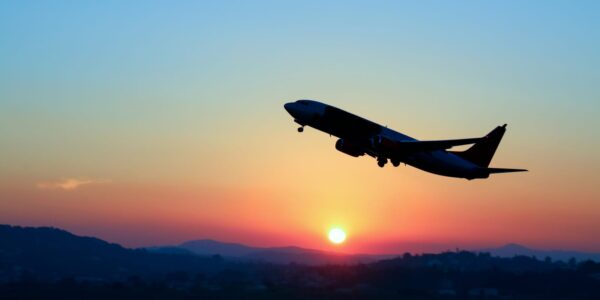How long-haul travel will change post-Covid!
Australian flag service Qantas made history lately by means of ferrying passengers nonstop between South America and Australia. The airplane a Boeing 787 Dreamliner departed Buenos Aires rapidly past midday neighborhood time. Some nine, three hundred miles ‘14.973km’ and 17-plus hours later, QF 14 landed in Darwin.
In doing so, the service set two internal records: longest distance protected and longest time inside the air for an industrial flight. Captain Alex Passerini, who commanded QF 14, later said: Qantas has constantly stepped up to a project, specifically with regards to long-haul travel, and this flight is an exceptional instance of the skills and interest to the element of our flight making plans team.
Contrary to the famous notion, flying for so many hours isn’t always completely new. In the Nineteen Thirties, Pan Am jets hopscotched across the Pacific Ocean with regularity.
Passengers onboard the Honolulu clipper should count on 20-hour flight times whilst shuttle between Hawaii and the continental United States. Qantas followed in shape a decade later. In 1943, the Flying Kangaroo launched provider among Ceylon now Sri Lanka, and Australia, its flying boats taking over to 33 hours to finish the ride. Passengers who did have been eventually admitted to The Rare and Secret Order of the Double Sunrise, so named because of the 2 sunrises they would see all through the journey.
The 21st Century has visible the long-haul, nonstop fashion keep. In 2004, Singapore Airlines made headlines when it released a service between New York and Singapore; a 9,500-plus mile ‘15,289km’ haul that may rely upon winning winds take up to 19 hours. Less punishing although now not by means of a whole lot is Qatar Airways Doha to Auckland, New Zealand carrier which clocks in at nine,000 miles 14,484km.
Passengers, onboard the Boeing 777 cross 10 time zones and simply the complete period of the Indian Ocean, continental Australia, and the Tasman Sea before arriving inside the City of Sails. Trip time? 18 hours. Similar feats of flight are anticipated later this yr whilst United and American Airlines launch services in America and India.
Fun stuff, minus the indignities of an air tour of direction. For one aspect, there is not anything attractive about being sealed in a protracted metal tube. Do so for ever-longer intervals and you’re in all likelihood to emerge as grumpy. When passengers are grumpy, flying turns into much less a laugh; and if something isn’t a laugh, why do it? Early flyers have been greater lucky. High fares confined who ought to fly, the result being a pick out few may want to enjoy pricey providers for hours.
Today’s flyers need to fly similarly, faster, and in fashion, all at the same time as paying much less. Catering to these needs requires revolutionary questioning and airways are increasingly making an investment in products in order to maintain long-haul passengers satisfied. Here are 3 of them.
Engine technology
Jets need gasoline, masses of it. The Boeing 747 an icon of the lengthy-haul journey era burns gasoline at an amazing price of 1 gallon in keeping with the 2nd 4.54 liters consistent with the second. Consequently, to hold jets like this flying for hours, you want a large petrol tank. Airplanes just like the Boeing 747 convey upwards of 57,000 gallons of 259,127 liters of gasoline the report holder is the Antonov An-225 which could deliver nearly 100,000 gallons or 454,000 liters. By evaluation, the common 4-door Sedan holds in the direction of 15 gallons sixty-two. 2 liters. A bigger tank may additionally assist you go further but assume your gas payments to be heftier. At modern fuel expenses, topping off the common Sedan will price you $50 ‘£37.30’; a Boeing 747, upwards of $one hundred forty,000 ‘£104,480’. Such weighty expenses bode badly for passengers, a great deal of whose coins go in the direction of paying airline gas charges. Making things worse is volatility inside the strength market that can reason for large swings in gas fees. For instance, a one-cent change in gas expenses can produce a $40m ‘£29.8m’ income or loss for vendors.
An efficient engine permits you to burn much less gasoline
But assistance is at the manner. Engine producers are studying and succeeding at making their merchandise extra green. An extra-efficient engine way less fuel burn, and less gas burn lower airline costs and ideally, fares. Agnes Jocher, a professor of sustainable future mobility at the Technical University of Munich, says improvements in so-known as ‘pass ratios’ are key to reducing gasoline use.
This ratio indicates how an awful lot of air flows around the engine as opposed to via it. Jocher says, typically talking, the higher the ratio, the extra efficient the engine. The extra efficient engine, decrease its gas intake. Today’s jets burn on a common 60% much less fuel than the first generation of business aircraft, thank you in large part to skip ratios enhancements. Jocher expects this fashion to maintain as airlines keen to move long-haul, nonstop discover ways to trim costs. When it involves saving fuel, she notes, higher skip ratios are key.
Losing weight
A green engine can help you burn much less gas. But so can shedding weight. The purpose comes all the way down to easy physics. It takes greater energy to move more mass. A heavier airplane will all else being same burn extra jet gas than a lighter one. A fighter jet also can fly quicker, shaving treasured mins off a flight. That bodes well for the airline keen to maximize airplane productiveness and passengers eager to arrive at their destination quicker.
One way to decrease aircraft weight is foregoing wiring and cables. These devices act as the connective tissue for jetliners, forming crucial hyperlinks between the cockpit and aircraft structures like the touchdown gear, door sensors, and existing support systems. The trouble? They are heavy. By one estimate, wires, switches, and sockets can add over 16,000 lbs 7.2 tonnes to an extensive-frame passenger jet. And more weight approaches more gas burn. The answer? Fly-by means of-wi-fi systems, are a lightweight digital era that connects the cockpit and vital plane management systems through the airwaves.
Qantas recently took a more innovative method to shed kilos. The service tasked business dressmaker David Canon with growing a new line of in-flight cutlery and crockery. A key requirement? The collection of plates, dishes, and utensils might have to be lighter than their predecessors. Achieving this feat becomes, to put it mildly challenging. Canon says he and his group had been now not capable of reducing the thickness of the crockery as this will affect its durability. Instead, the crew redesigned each piece to reduce profiles and minimize sections and use less fabric on average.
Airplanes are notwithstanding the quality mechanical improvements cramped noisy flying chunks of metallic
Canon describes the attempt as a delicate balancing act to maintain capability, durability, and weight. These efforts paid off. The tableware which debuted on Qantas’ 17-hour-long Perth to London direction become 11% lighter than its predecessors, generating “extremely good gasoline-saving blessings. The new tableware changed into so popular Qantas eventually used it across its entire community.
Finessed meals
Airplanes are in spite of the satisfactory mechanical improvements cramped, noisy flying chunks of metallic. And despite the inherent wonder of flight, in case you’ve ever flown for hours, you know the way boring plane journey may be. Airlines have replied by means of beefing up onboard facilities such as showers, and entertainment imagines having four,500 TV and audio channels to choose from, and maximum significantly, advanced cuisine. For example, some passengers on the 17-hour trek between Los Angeles and Singapore are handled to a meals spectacle, one that could rival eating in the exceptional Michelin-starred restaurants. Orange-braised infant beet salad with endive, cherry tomatoes, and pine nuts? Perhaps citrus salmon over pumpkin dal, basmati rice, and cilantro ghee? And spiced apple cake to complete? It’s a much cry from the unrecognizable, reheated food of the past.
But just the fact food sounds right doesn’t mean flavor follows suit. When flying excessively above the clouds, your ordinary feeling of taste is going out the window. The frequently touted culprits are stress drops there’s much less air at altitude and plummeting humidity cabin air is commonly drier than the Sahara Desert. By one estimate, the aggregate of low pressure and dryness dulls your flavor buds by using 30%.
However, there’s much less speaking about the purpose for waning palate sensitivity. A latest take a look at found loud noise can motivate the savory flavor to be enhanced, and sweetness dulled. They have a look at’s authors chalk it as much as the noise-induced suppression of intense flavors which in the end adjust the perception of the ingredients we consume. Their proposed repair? Rethinking menus to match flavor alternatives at altitude so passengers can notwithstanding the consistent buzzing of jet engines higher taste their food. Given the billions, airlines are investing in going long-haul, spending a touch extra on menu diligence may be a bargain.
The Covid-19 pandemic has understandably depressed air journey demand. Closed borders and ever-changing checking-out necessities are less than engaging for any vacationer. But as border regulations ease, and demand alternatives up, expect renewed interest in an extended-haul flight. Qantas sensing passenger appetite for arriving sooner in preference to later has already renewed its commitment to Project Sunrise, an ambitious attempt to fly nonstop from its Sydney hub to prized markets like London, New York, and Paris. With competitors sure to observe fit, innovation will discern which providers make it and which of them don’t.


 For all latest news, follow The carefulu Google News channel.
For all latest news, follow The carefulu Google News channel.





